Idea Explanation
We want to build an eco-system on our wearable.
(special thanks to Korrina for making these amazing sketches)
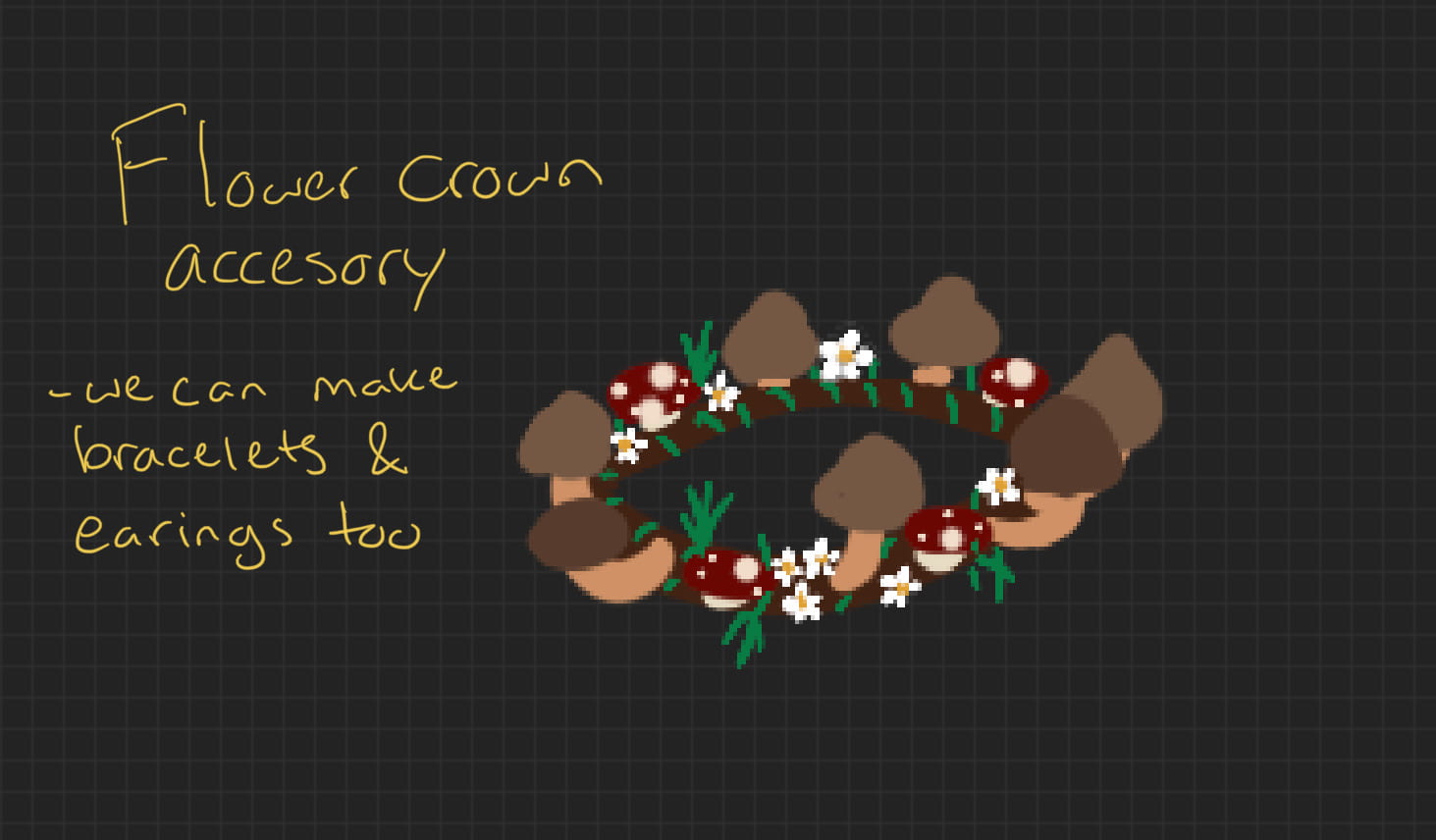
Accessory
For the accessory, I would like to try sealing real plants and flowers using epoxy. There could be movements going on, for example, the spinning plate we made last week, but the movements are not necessary.
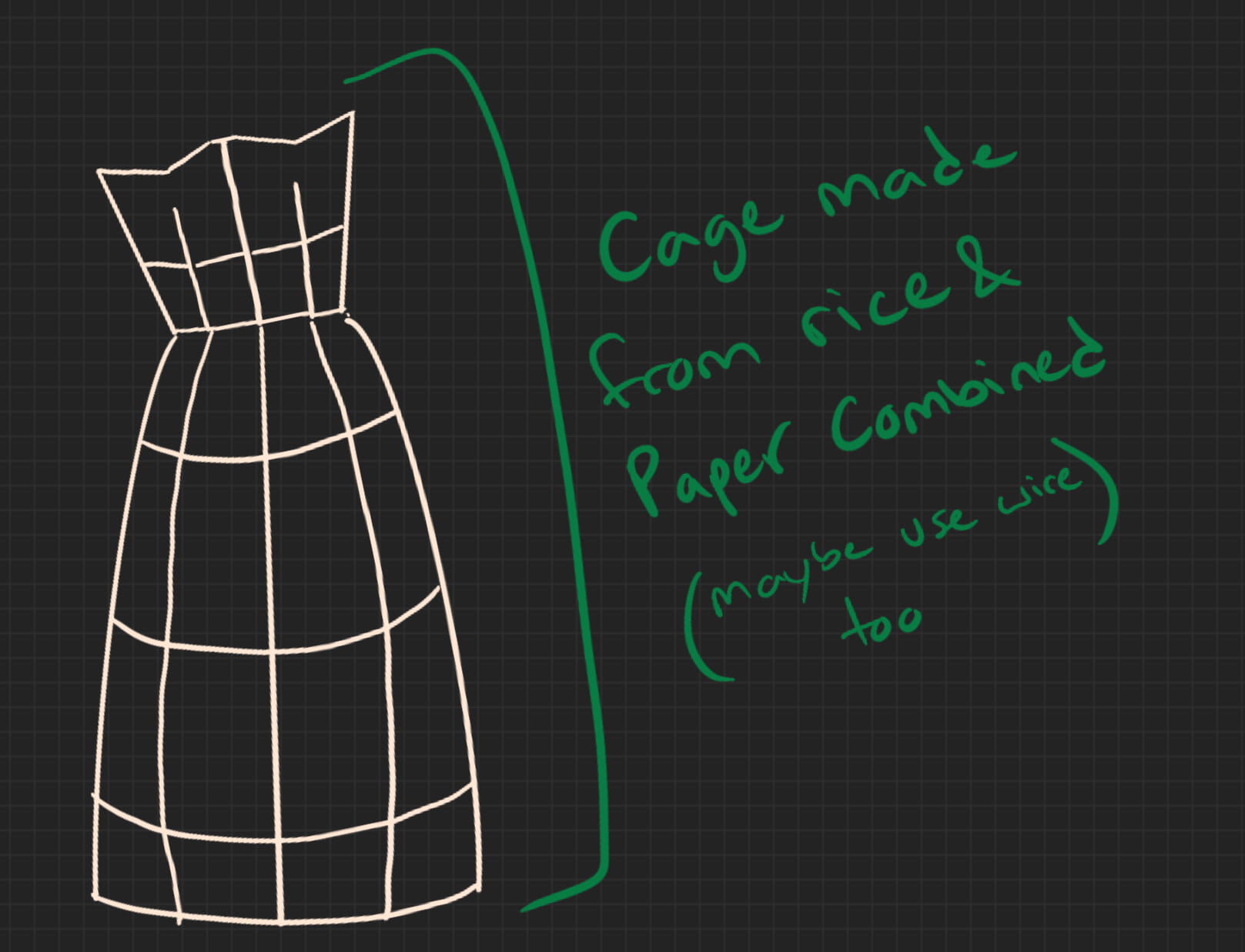
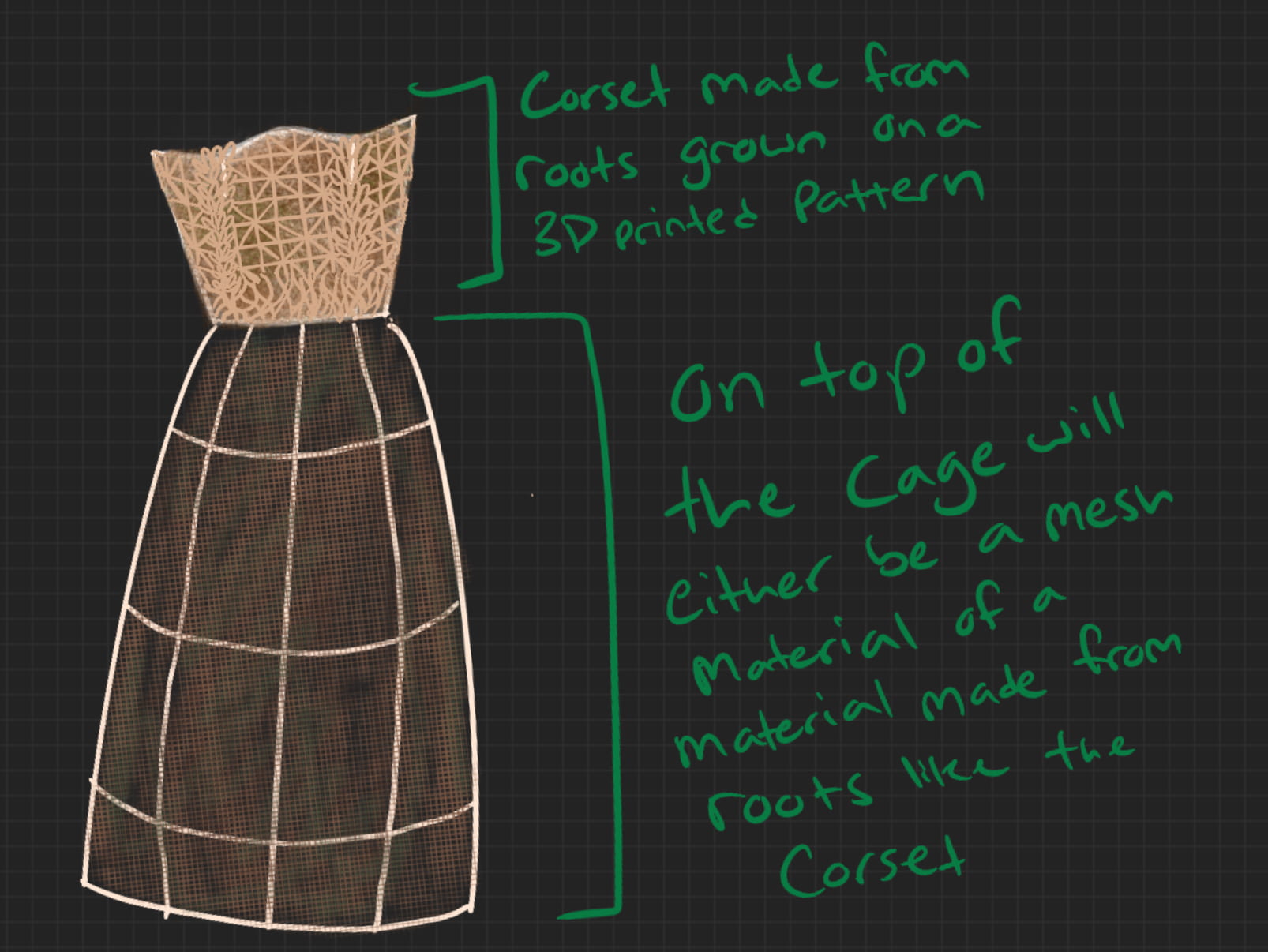
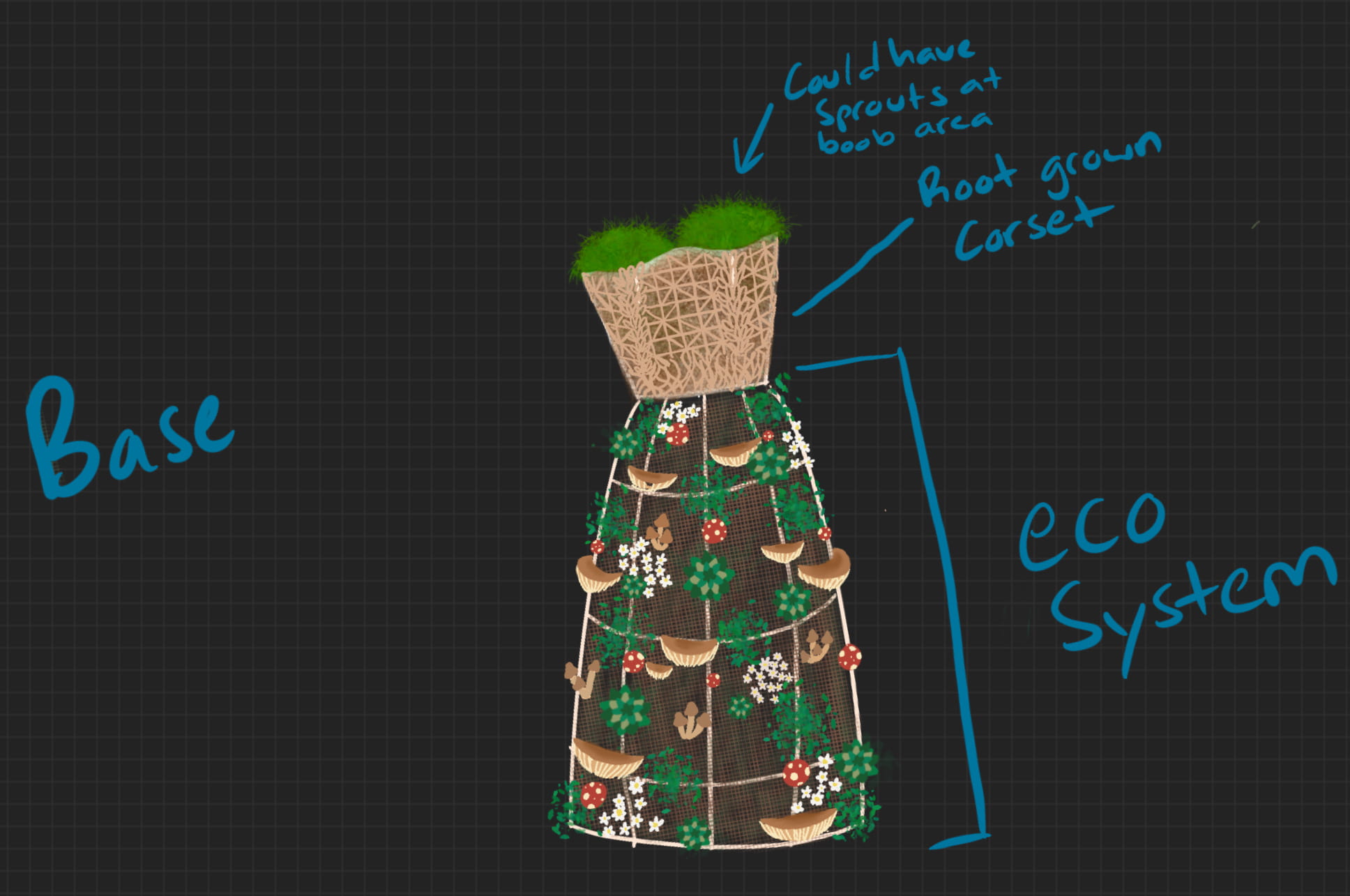
the cage/ main part of this wearable
The cage will be made using rice and paper, and wires for the support. After reading the article about hemp fabric, maybe we will integrate hemp fabric as well.
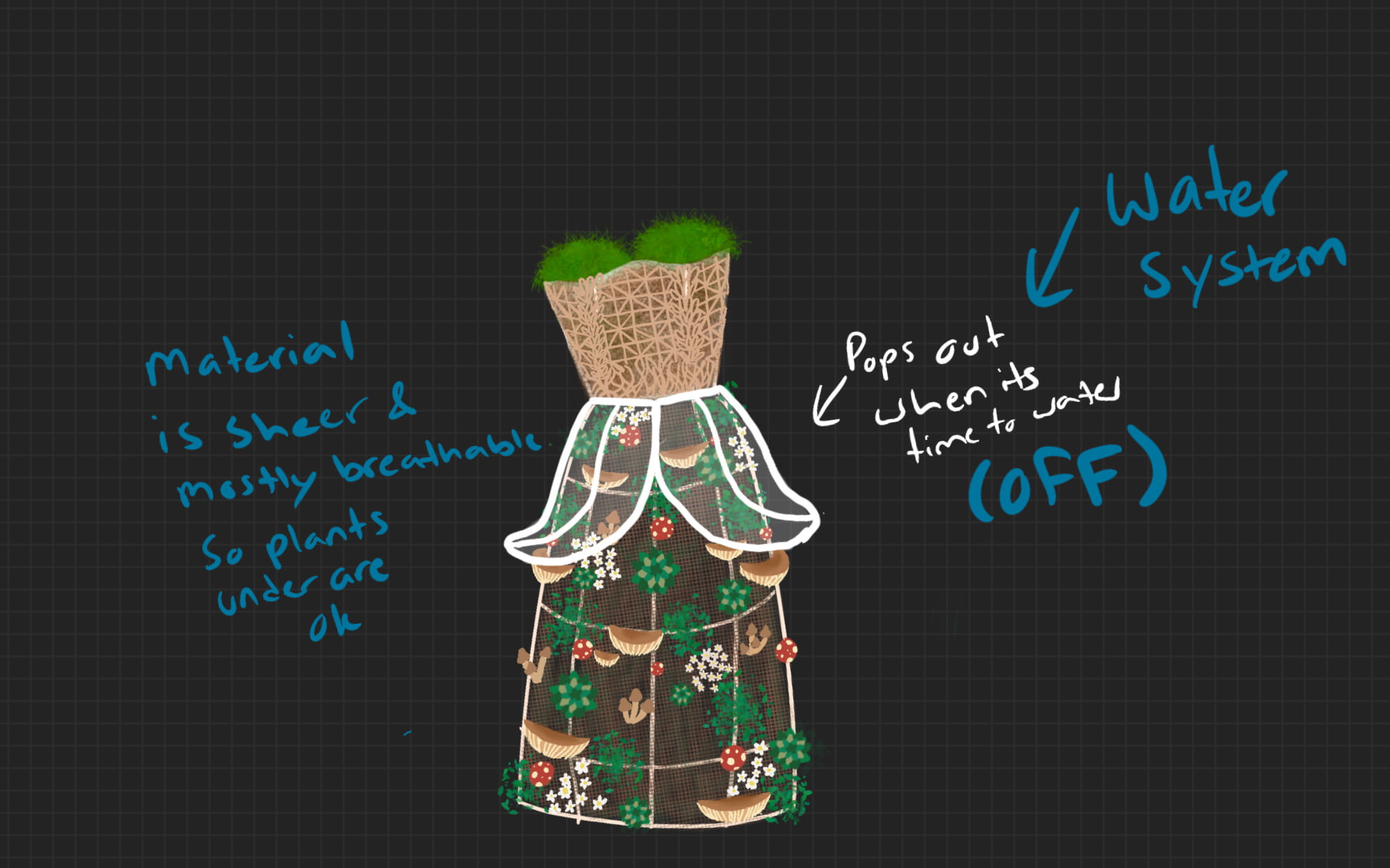
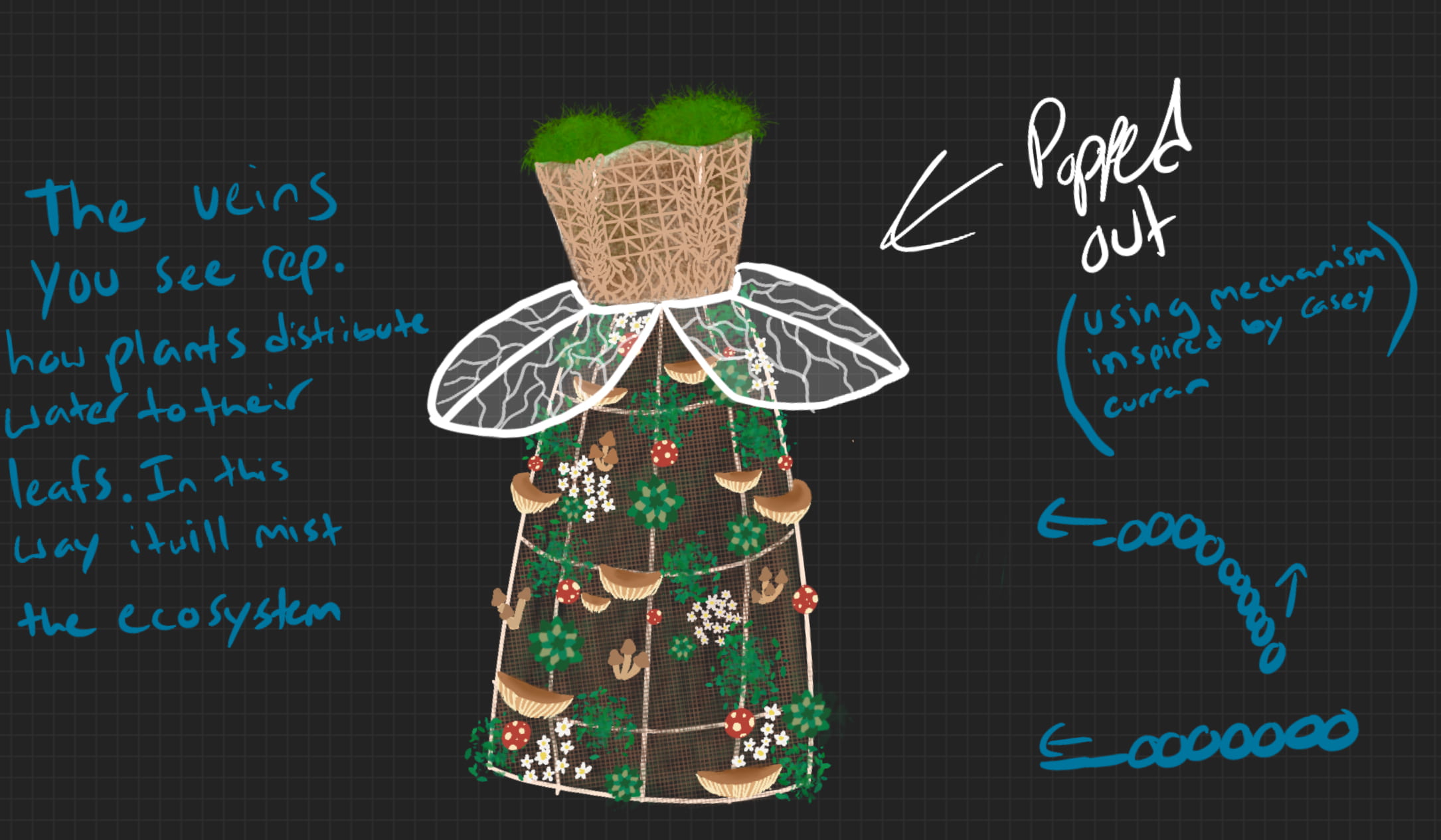
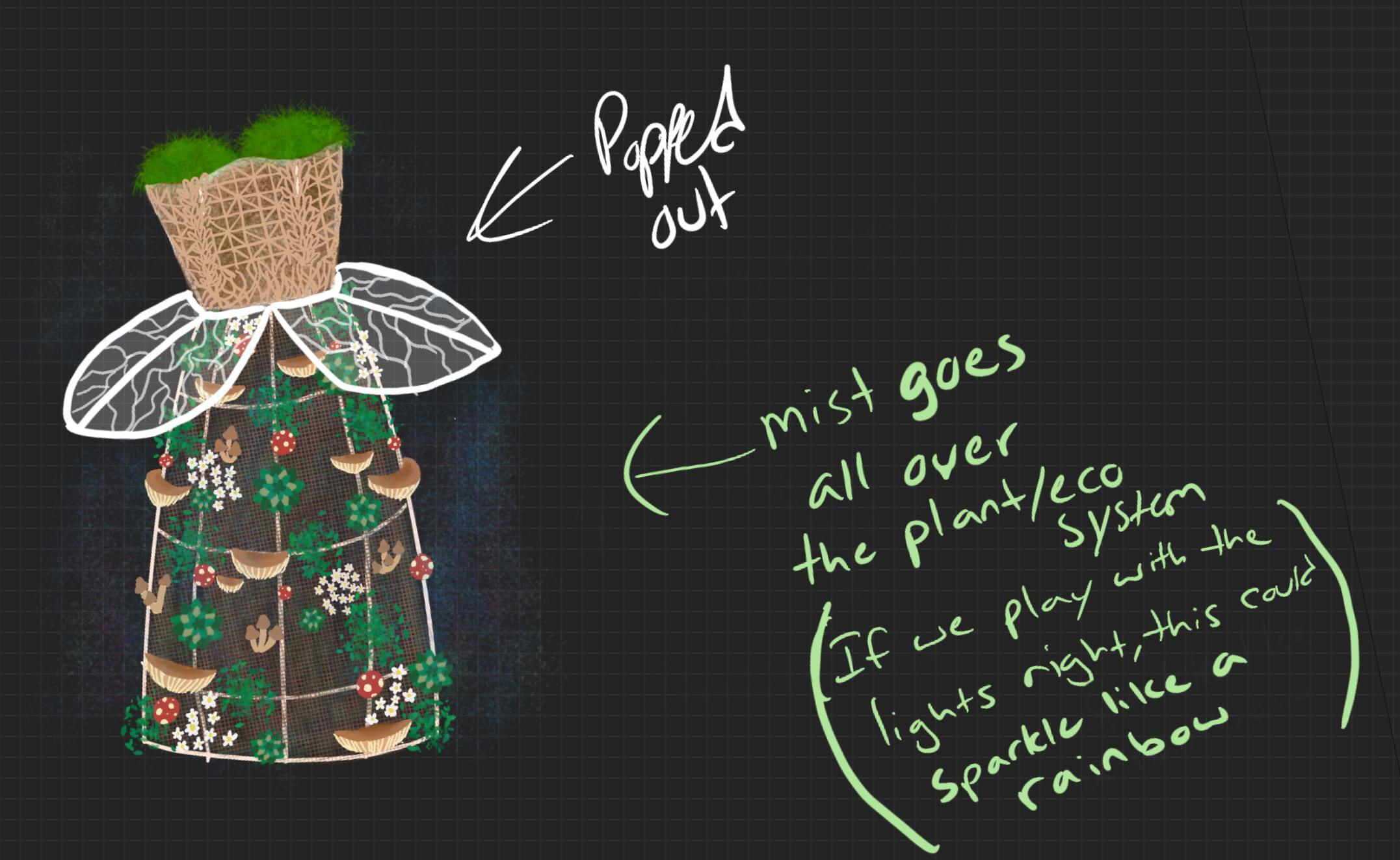
- For the bottom part, we will have plants, fungi, mycelium and flowers
- According to rootfull.com, the wheatgrass grows the fastest. And based on my other research, basil and cress may be good choices as well
- Based on the tips to grow plants/ mushrooms, the interactive mechanisms may be:
- A filter that pops out and sprays water when the moisture sensor detects that it’s too dry
- LED lights implemented to ensure enough lightings (and create beautiful effects when spraying water)
Why this idea?
The fast fashion industry is one of the least sustainable industries in the world. Not only does it consume a lot of energy and resources, but also produces many wastes and environmental and ethical stains. On the other hand, while there are clothes made from eco-friendly materials available, we as the consumers can’t see what the production process is like. In fact, some companies choose to green-wash themselves. Despite their claim that they use environmentally friendly materials, in practice, some materials might be almost impossible to attain. (Context: This is based on my conversation with the CEO of BlackShadesUSA, an environmentally-friendly eyewear brand. I met him on a weekend market in Shanghai, and interviewed him to finish a project for my EAP class in freshman year. He told me that some companies claim to reuse marine plastic, however, because of the exposure to sunlight and sea water erosion, the chemical compound of the plastic might be different.)
By making and wearing this plant-based dress, we want to demonstrate the true idea of environmentally friendliness. We want to experiment with the simplest way of making fabrics from plants, and imagine a future where urban farming can be a part of people’s fashion choices. We would also like to embrace futurism and the fact that our world is technologically driven. So in the end, our goal would be to combine these two aspects to display an Eco-Cyberpunk aura. Let’s show how technology can be used for good or sustainable fashion.
We see buildings taking this shift, so why not humans as well.
Research
Potential Mechanisms
- [watering] Automatic Plant Watering with Arduino | link
- [sensor] Simple Soil Moisture Sensor Circuit | link – use LED lights to indicate moisture level
Existing Projects for reference
- [cage material] Rice + Paper: Fast & Easy Rice Paper Decoupage | link
- [roots] How to manipulate the roots:
- Artist diana scherer manipulates plant roots to grow into intricate, lace-like arrangements | link to an article about her | her personal website
-
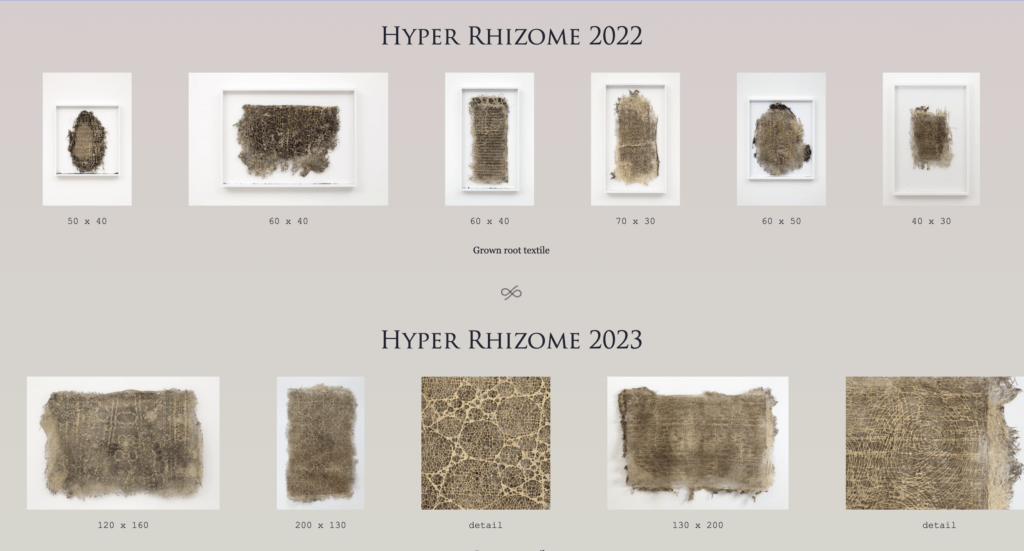
from diana scherer’s personal website 🙂 - Rootfull, a material innovation company developing textiles using plant roots. They make artefacts as well as wearables. | link
-
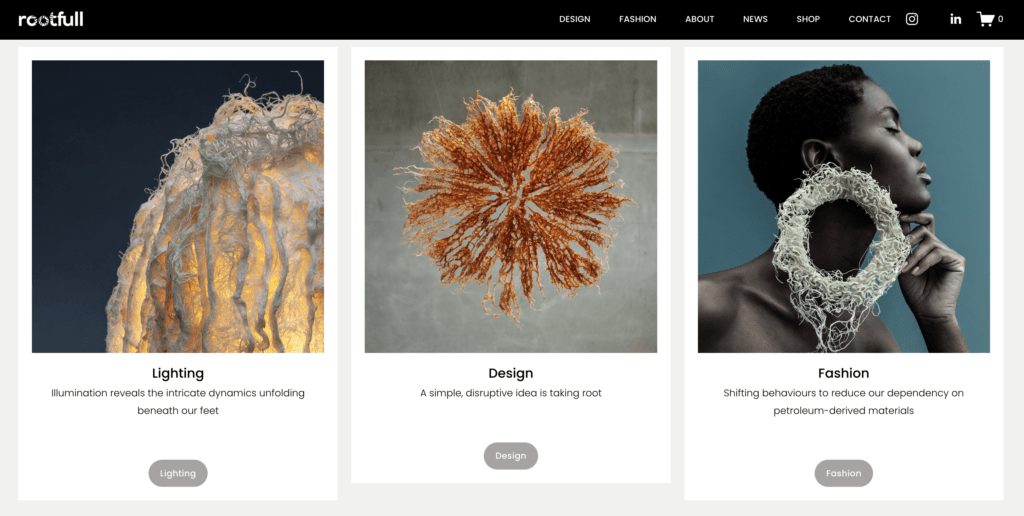
if you go to about, there’s a video, and more information on this company -
[materials] Mycelium Fabric
mycelium, the mass of branched, tubular filaments (hyphae) of fungi. The mycelium makes up the thallus, or undifferentiated body, of a typical fungus. (Britannica)
-
-
- Features of the mycelium fabric: ” The fabric created from mycelium is non-toxic, waterproof, and fire-resistant. It can be as thin as paper for dresses and lamp shades, or incredibly thick for heavy-duty items, and in both cases, the end result is remarkably flexible and strong. ” | reference | a company using the fabric to make stuff
-
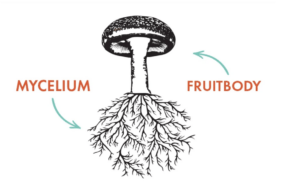
https://fungi.com/blogs/articles/mushroom-life-cycle -
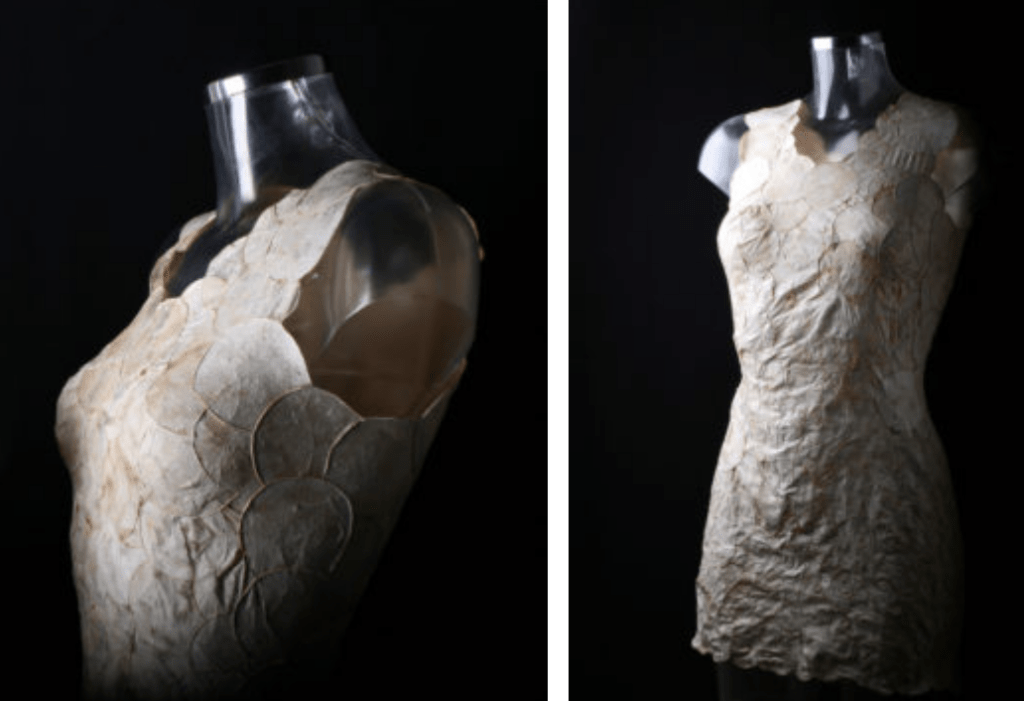
https://materialdistrict.com/article/mycotex-textile-mushroom-mycelium/ more info on the fabric can be found here as well
-
-
Hemp Fabric
- I would say hemp fabric is relatively common now. However, I didn’t realize the advantages of hemp fabric until I read this article. It covers the quality of hemp seeds, the benefits of hemp fabrics, and how to process the hemp.
- [knowledge on growing plants]
- The easiest fungi to grow: oyster, white button, and Shiitake | reference
- Basic requirements for mushroom cultivation | reference
- Mushrooms grow from mycelium, the thread-like roots of fungi.
- sterile growing substrates like sawdust, wheat bran, coco coir to plant mycelium cultures
- Temperature, gas exchange, and moisture, light
- Vertical farming mushrooms requires a specific light spectrum and intensities for mushrooms’ crucial metabolic processes and tissue development. Too little or too much light can suppress mushroom formation and impact crop yields. – LED lights (blue and red LED spectrums mimic sunlight and stimulate fruiting in many edible fungi); LED lights also consume less energy
- Brightness of the lighting should be adjustable as mushrooms transit between colonization and fruiting stages
Plant Diary 😀
here is the link to the plant diary: 📓 https://share.goodnotes.com/s/XLHRvNIVQLQlx3MIUdB0yN
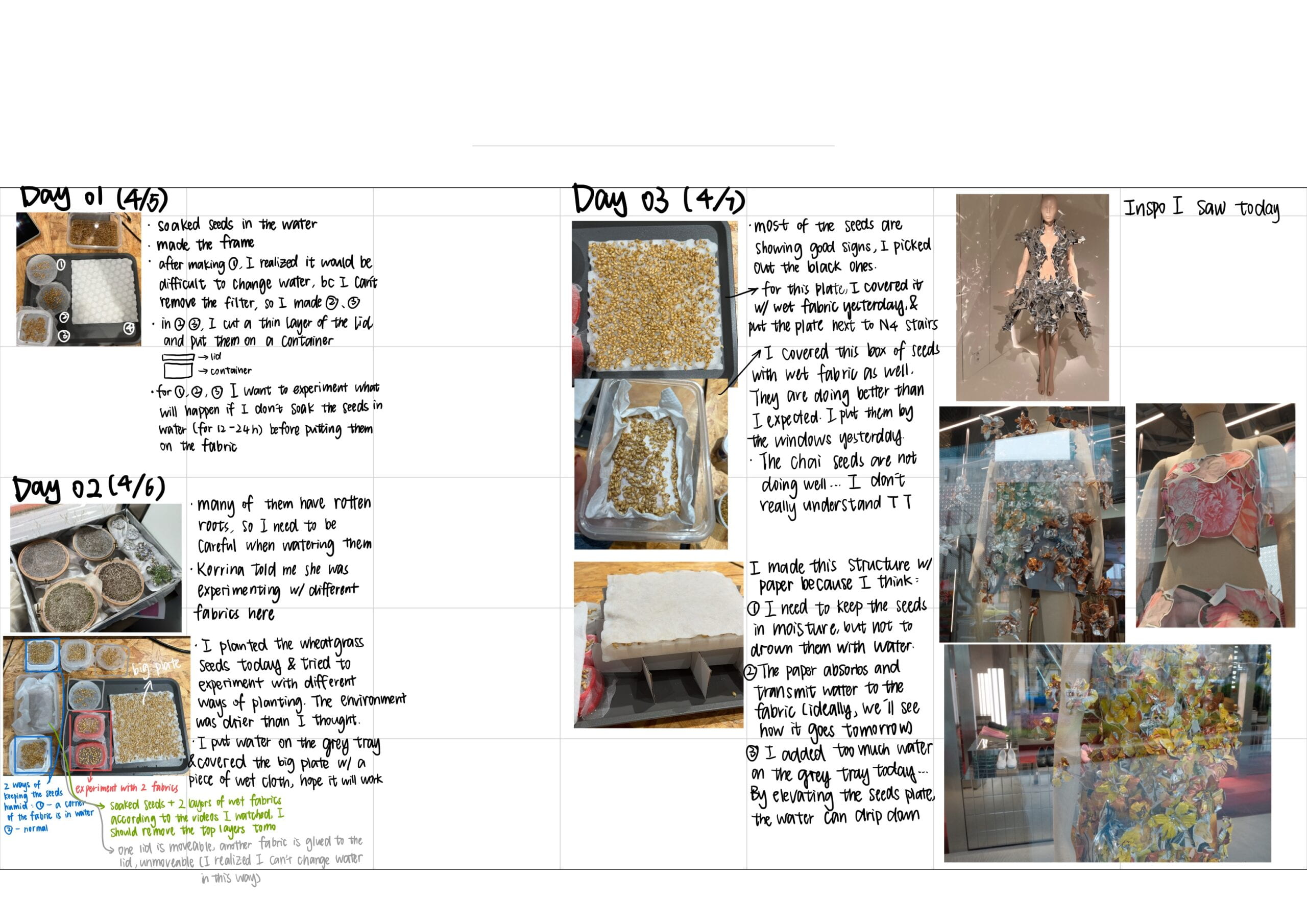
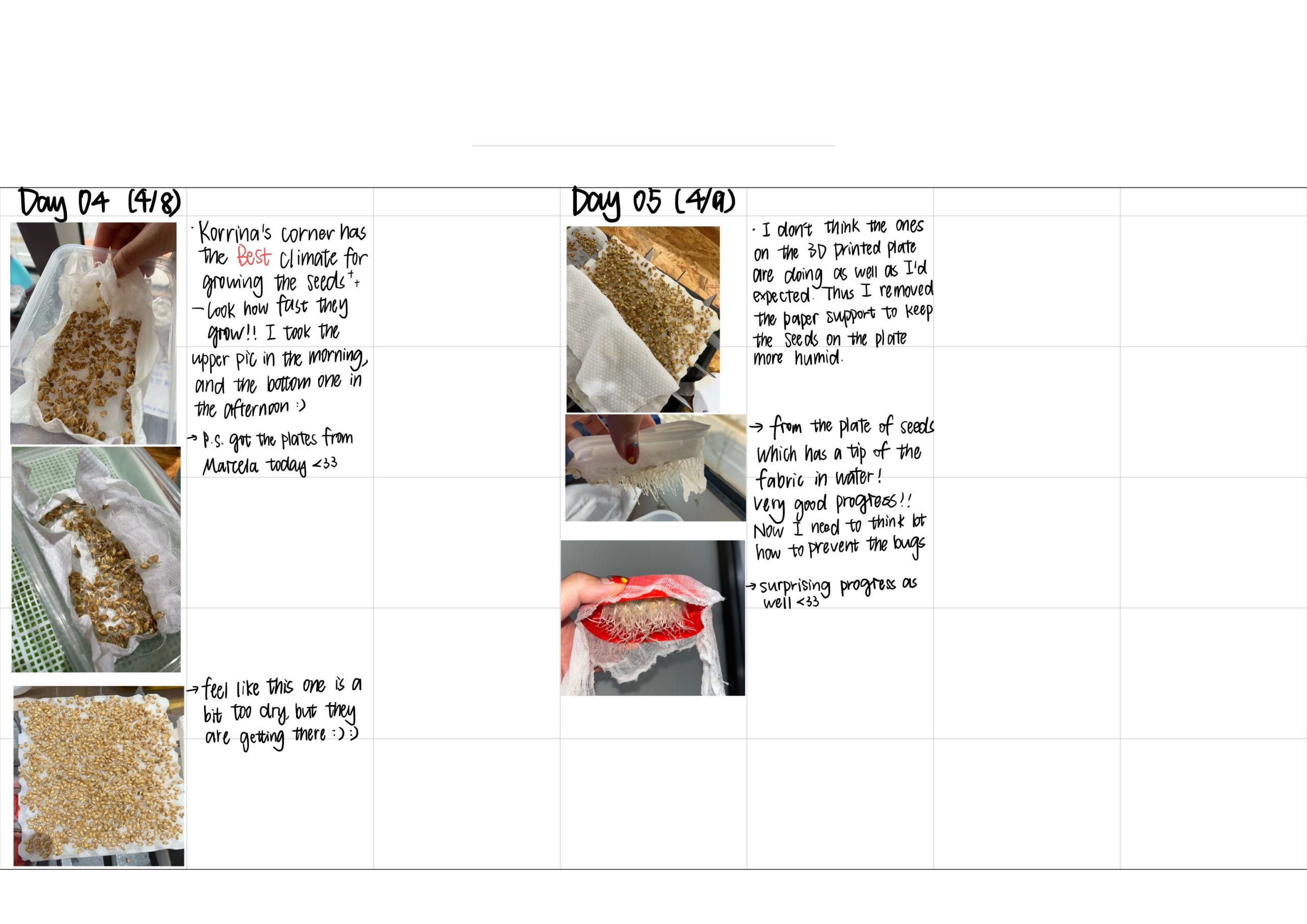
Leave a Reply